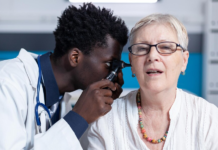Attention Deficit Hyperactivity Disorder (ADHD) is one of the most common neurodevelopmental disorders, often beginning in childhood and persisting into adulthood. Characterized by difficulties in maintaining attention, impulsivity, and hyperactivity, ADHD can significantly impact an individual’s academic, professional, and social life. Understanding ADHD’s diagnosis and treatment options is crucial for individuals, families, and professionals seeking to manage the condition effectively.
What is ADHD?
ADHD is a condition that affects how a person focuses, controls impulses, and manages their energy levels. It manifests in three primary types: predominantly inattentive, predominantly hyperactive-impulsive, and combined presentation. People with ADHD often struggle with staying organized, managing time, following through with tasks, and controlling emotions. These difficulties can lead to problems in various aspects of life, including work, school, and personal relationships.
While ADHD is often thought of as a childhood disorder, it’s important to recognize that many individuals continue to experience symptoms into adulthood. The symptoms may evolve as individuals grow older, with impulsivity and hyperactivity becoming less prominent, while inattention and difficulties with executive function persist.
The Diagnosis of ADHD
The Diagnosis of ADHD is a complex process that involves multiple steps and the input of various professionals. ADHD cannot be diagnosed through a single test. Instead, healthcare providers assess symptoms based on specific criteria outlined in the Diagnostic and Statistical Manual of Mental Disorders (DSM-5). The criteria include a pattern of inattention and/or hyperactivity-impulsivity that has lasted for at least six months and interferes with the individual’s functioning.
The process typically begins with an in-depth evaluation, which includes gathering information from multiple sources, such as parents, teachers, or spouses, in addition to the patient themselves. Physicians and mental health professionals will conduct interviews, use questionnaires, and, when necessary, administer behavioral assessments. A thorough review of the patient’s developmental, educational, and medical history is essential to rule out other conditions that might cause similar symptoms, such as learning disabilities, anxiety, or depression.
For adults, the diagnosis is often more complicated since symptoms of ADHD may overlap with other adult mental health disorders, such as anxiety, depression, or substance abuse. Adult ADHD diagnosis requires the presence of symptoms that began in childhood and have continued to impact the individual’s life.
Treatment Options for ADHD
Once ADHD has been diagnosed, a tailored treatment plan can be developed. Treatment typically involves a combination of behavioral interventions, medication, and lifestyle adjustments to manage symptoms and improve quality of life.
-
Medication
Stimulant medications, such as methylphenidate (Ritalin) and amphetamines (Adderall), are the most commonly prescribed treatments for ADHD. These medications work by increasing the levels of neurotransmitters, like dopamine and norepinephrine, in the brain, which help improve attention and focus. For some, non-stimulant medications like atomoxetine (Strattera) or certain antidepressants can be effective.
-
Behavioral Therapy
Cognitive-behavioral therapy (CBT) is widely used to help individuals with ADHD develop coping strategies, improve time management, and enhance organizational skills. Behavioral interventions focus on modifying problematic behaviors, reinforcing positive behaviors, and teaching social skills. Parents of children with ADHD may also benefit from parent training programs, which provide strategies to manage their child’s behavior effectively.
-
Lifestyle Adjustments
Healthy lifestyle choices can complement medication and therapy. Regular physical activity, a balanced diet, and adequate sleep play essential roles in managing ADHD symptoms. Exercise, in particular, has been shown to reduce hyperactivity and improve focus in individuals with ADHD. Creating structured routines and using organizational tools like planners and reminders can also help individuals stay on track with tasks.
-
Support Systems
Building a robust support network is crucial for managing ADHD. For children, this may involve close collaboration between parents, teachers, and counselors to create a consistent and supportive environment. For adults, seeking support from family, friends, or ADHD support groups can help manage stress and encourage positive outcomes.
The Importance of Early Diagnosis and Intervention
An early diagnosis of ADHD can be life-changing. Children who receive a timely diagnosis often benefit from early intervention strategies, which can reduce the long-term impact of ADHD on their academic and social development. Without treatment, ADHD can lead to a host of challenges, including poor school performance, difficulty maintaining relationships, and an increased risk of anxiety and depression.
For adults, receiving a diagnosis later in life can explain years of difficulties in various areas and provide a path toward more effective management. While there is no cure for ADHD, early diagnosis and comprehensive treatment can significantly improve an individual’s quality of life.
Conclusion
Understanding ADHD is essential for managing its symptoms and fostering a supportive environment for those affected. The diagnosis of ADHD requires careful evaluation, and treatment often involves a combination of medication, behavioral therapy, and lifestyle changes. With the right interventions and support, individuals with ADHD can lead successful and fulfilling lives. Whether you are a parent, teacher, or someone living with ADHD, knowing more about the condition empowers you to take the necessary steps toward effective management and improved well-being.





















